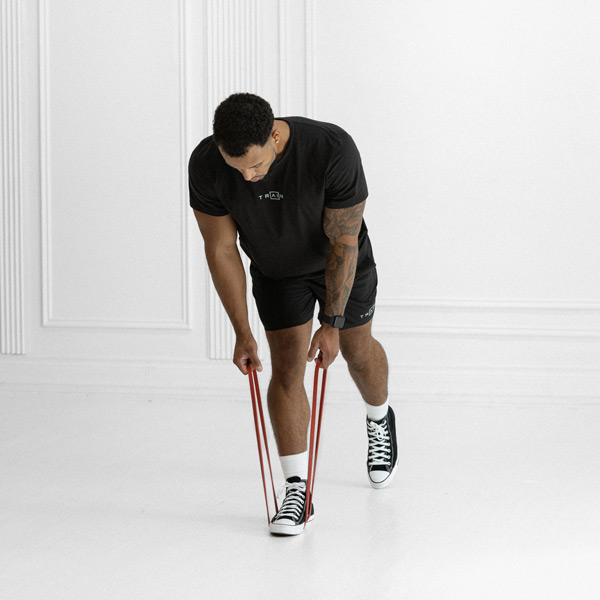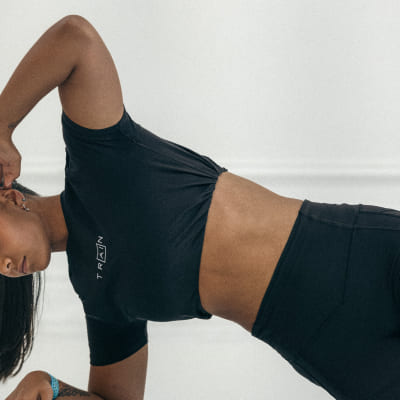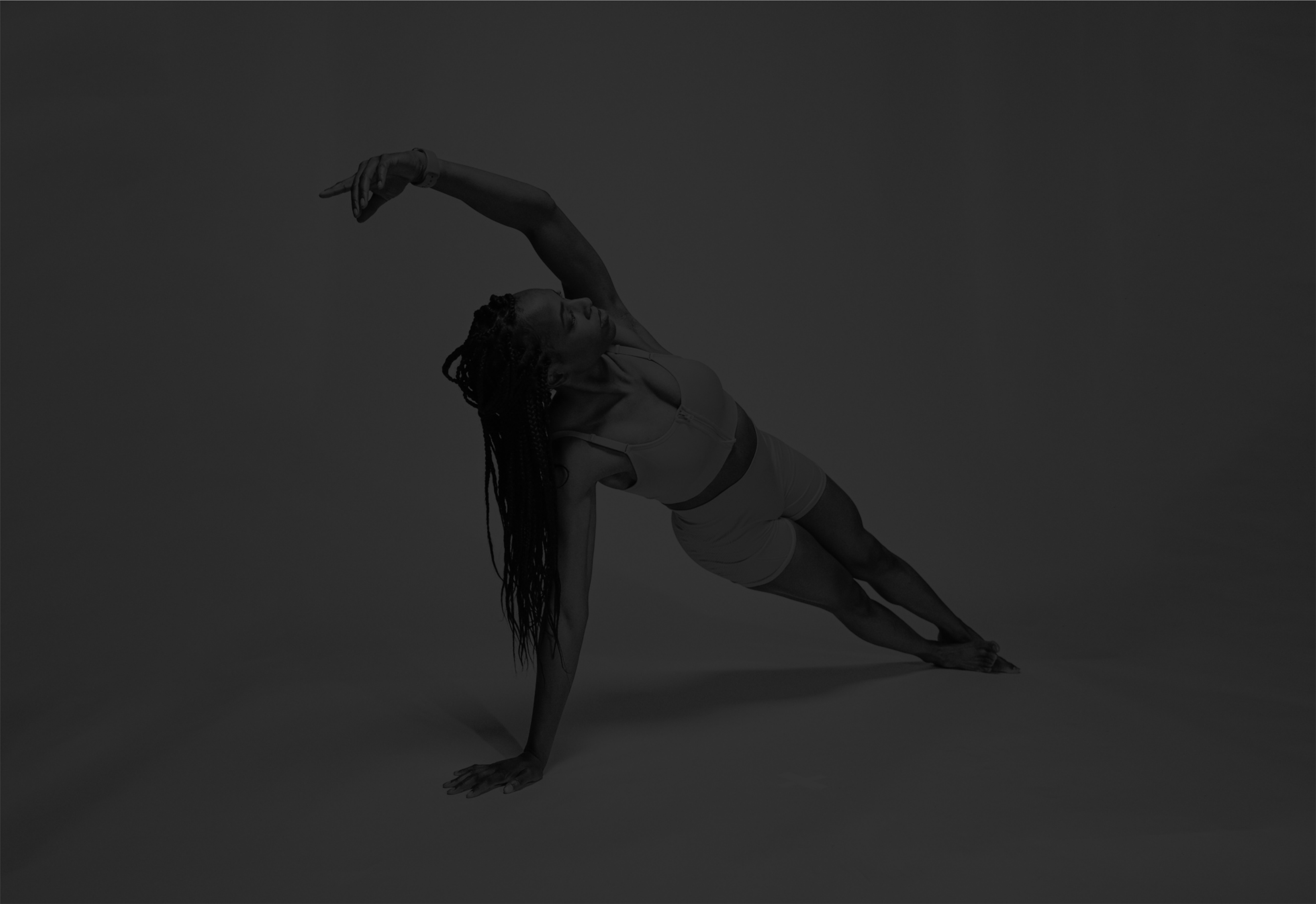Resistance Band Single-Leg Deadlift
Unilateral hip hinge with a resistance band that targets hamstrings and glutes to build posterior chain strength and single-leg stability; helps correct imbalances and improve balance.
About Exercise
Equipment
Bands
Difficulty
4/5 • Intermediate
Primary Muscle Groups
Hamstrings, Glutes
Secondary Muscles
Abs, Obliques, Quads
Accessory Muscles
Calves
Popularity Score
6
Goals
Training Style
Setup Requirements
Requires Rack
No
Requires Bench
No
Requires Spotter
No
Space Needed
Small
Noise Level
Low
Muscle Breakdown
View Muscle MapHamstrings
10/10Biceps Femoris, Semitendinosus
Glutes
9/10Glute Max, Glute Medius
Lower Back
6/10Erector Spinae
Abs
5/10Rectus Abdominis, Transverse Abdominis
Obliques
4/10External Obliques
Quads
3/10Calves
2/10Programming
Typical Rep Range
8-15 reps
Rest Between Sets
60-90 seconds
How to Perform
Stand on one foot with the resistance band's center under the arch of your standing foot. Hold the band's ends in the opposite hand with slight tension, core braced, and a soft knee bend.
- Hinge at hips, pushing them back while extending the free leg behind you.
- Lower torso until nearly parallel to floor, keeping back straight and hips level.
- Feel stretch in hamstrings without rounding spine.
- Drive hips forward through glutes and hamstrings to stand up.
- Return free leg to start, maintaining control.
- Switch sides after reps.
Coaching Tips
Form Cues
- Hinge from hips
- Keep back flat
- Hips square
- Gaze forward
- Squeeze glute at top
Breathing
Inhale as you hinge forward, exhale as you drive hips forward to stand.
Tempo
3-1-1
Range of Motion
Hinge until torso is parallel to floor or hamstrings stretch fully, with free leg extended in line with torso; full extension at top.
Safety
Safety Notes
- Avoid if acute low back pain
- Secure band under foot
- Stop if knee or ankle instability
- Prioritize form over resistance
- Consult professional for modifications
Spotting
Not required; use a wall for light balance support if needed.
Common Mistakes
- Rounding lower back
- Rotating hips
- Bending standing knee excessively
- Using momentum
- Letting free leg drop
When to Avoid
- Acute low back pain
- Severe knee or ankle instability
Flexibility Needed
- Adequate hamstring flexibility
- Hip hinge proficiency
- Ankle dorsiflexion for balance
Build Up First
- Master basic hip hinge
- Bodyweight single-leg balance
- Core bracing control
Also known as
Banded Single-Leg Romanian Deadlift, Band Single-Leg RDL, Resistance Band Single Leg Deadlift
Found this helpful?
Share your thoughts or help us improve this guide.
Similar Exercises

Resistance Band Single-Leg Romanian Deadlift
Bands
Hamstrings

Resistance Band Deadlift
Bands
Glutes, Hamstrings

Barbell Single-Leg Deadlift
Barbell
Hamstrings

Dumbbell Single-Leg Deadlift
Dumbbells
Hamstrings

Resistance Band Row
Bands
Lats

Resistance Band Hamstring Curl
Bands
Hamstrings

Kettlebell Single-Leg Deadlift

Kettlebell
Hamstrings

Resistance Band Pull Apart
Bands
Traps

Resistance Band Front Squat
Bands
Quads

Resistance Band Pallof Hold
Bands
Obliques


subscribe to our newsletter
Contact Us
hello@trainfitness.aiFind Us
130 Spadina Avenue, Toronto,
Ontario, M5V 0H4, Canada
©2025 All Rights Reserved
